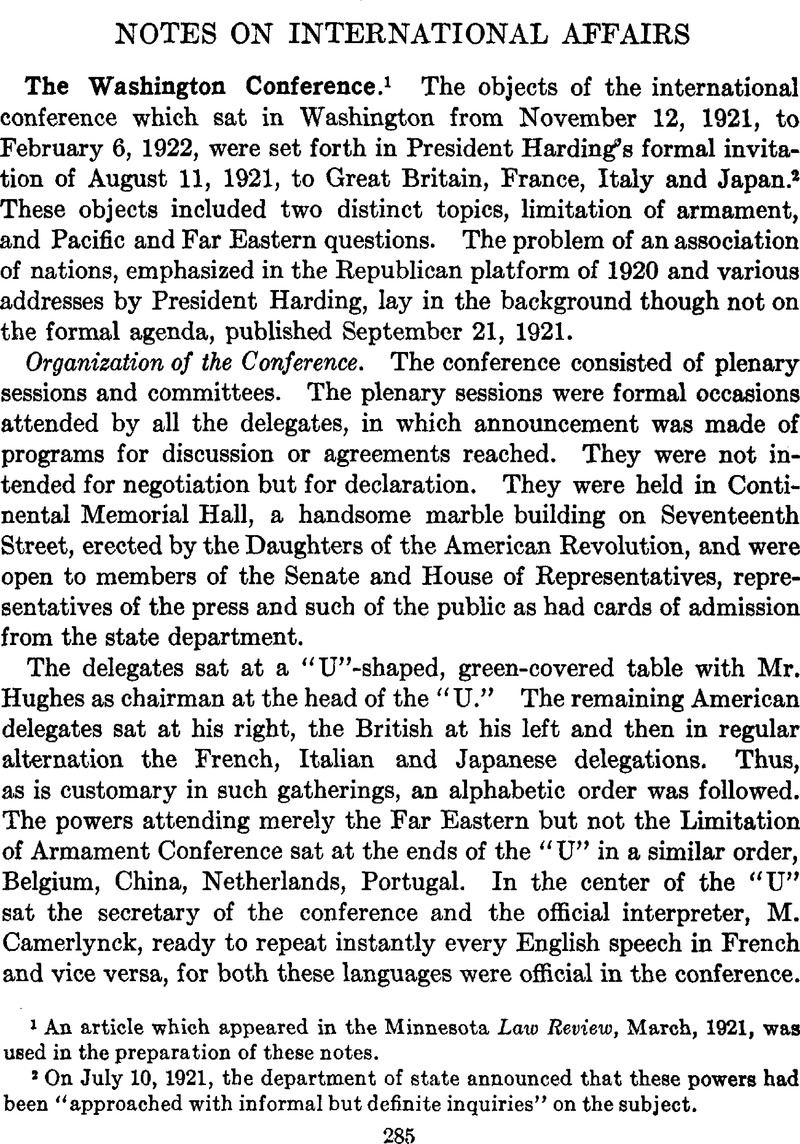Article contents
The Washington Conference1
Published online by Cambridge University Press: 02 September 2013
Abstract

- Type
- Notes on International Affairs
- Information
- Copyright
- Copyright © American Political Science Association 1922
References
2 On July 10, 1921, the department of state announced that these powers had been “approached with informal but definite inquiries” on the subject.
3 This demand was in accordance with British traditions. Earl St. Vincent of the British Admiralty said to Robert Fulton, when the latter presented plans for a submarine in 1804: “It is a mode of war which we who command the seas do not want, and which if successful would deprive us of it.” Bywater, , Atlantic Monthly, February 1922, Vol. 129, p. 267.Google Scholar
4 For a history of the efforts to limit armaments, see Wehberg, , Limitation of Armaments (Washington, 1921), pp. 5–6Google Scholar, translated from French edition, 1914; the same author's more exhaustive Die Internationale Beschrankung der Bvstungen (Stuttgart und Berlin, 1919), pp. 3–9; Fried, , Handbuch der Friedensbewegung, (Berlin und Leipzig, 1913), II, pp. 3–56Google Scholar, and Wright, , Limitation of Armament (Institute of International Education, Syllabus No. xii, November, 1921).Google Scholar
- 1
- Cited by




